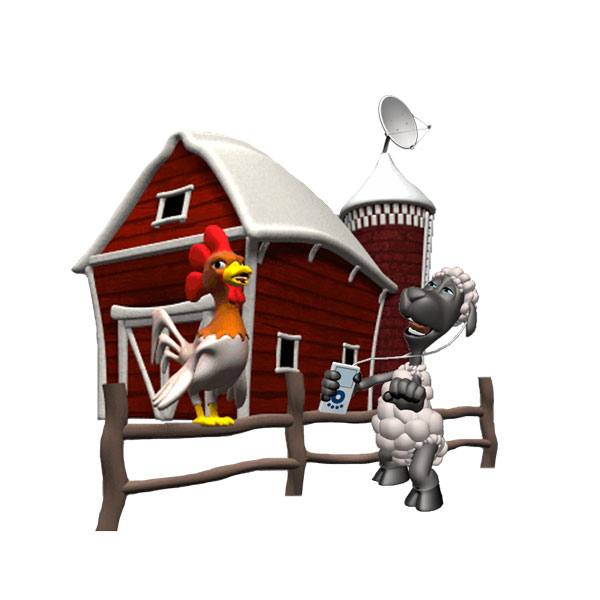How T1 Lines Provide Dedicated
Internet Bandwidth to WISP Towers
T1 lines are a cost effective
way to provide or "backhaul" Interent service to WISP
Wireless Interent Service Provider towers., espeically in rural
areas.
Wireless Internet service is becoming more
available in both cities and rural areas. A WISP or Wireless
Internet Service Provider often has the broadband market to themselves
in areas where telephone companies have been slow to add DSL
capability and Cable TV companies haven't built-out. This is
certainly true of low population density agricultural areas,
but is often the case with newer residential subdivisions as
well.
Wireless service only needs a tower and
digital radio transceiver. It's often more practical than trenching
wires to every user, especially for competitive service providers
who don't already own the landline infrastructure. A WISP can
get Internet to the users, but how does the WISP get connected
to the Internet?
What is T1?
The best answer is often a T1 Line or multiple bonded T1 lines.
Why? T1 was designed from the beginning to be easy to deploy
over long distances. Like DSL, it is provisioned on copper wire
pairs. Telephone wires work just fine. You need two pairs, one
for upstream or transmit and an independent pair for downstream
or receive. This gives you full duplex digital service. Unlike
DSL, T1 is a synchronized transmission system that can be regenerated
every mile or so. It is also compatible with other tariffed telecommunications
services, such as DS3 or OCx. Over long distances, your T1 service
might be carried part of the way by optical carrier if that is
more cost effective for the provider.
Near Universal Availability
T1 service is almost universal throughout the country. If you
can get telephone service to a location, chances are you can
also get T1 service. That makes T1 carriers perfect for providing
Internet service to remote tower sites, housing subdivisions
or farms.
T1 line service runs at 1.5 Mbps. You don't
share the Internet feed like you do with DSL or Cable, so you
get a full 1.5 Mbps of bandwidth all the time. This is generally
adequate for serving up to 20 or 25 simultaneous users through
a WISP or Wi-Fi hotspot. If you need more bandwidth, you can
bond T1 lines together to get 3, 4.5, 6, 7.5 or 9 Mbps. The nice
part of bonding is that you can start small and keep your costs
low until you get a subscriber base large enough to need and
pay for the additional bandwidth.
Find Business Broadband in Rural Areas
If your business is located in a new subdivision or beyond the city limits, you know how difficult it is to find modern high speed broadband Internet service. We have dozens of providers who offer traditional T1 lines, Ethernet over Copper and Fiber Optic, High Speed Satellite, Gigabit DOCSIS Cable and Wireless broadband connections, including rural areas. Managed SDN Software Defined Networking and SD-WAN available, as desired. You may be surprised at what is currently available for your location at a very reasonable cost. Find out what network services and pricing are available now for your commercial business building anywhere in the U.S. Simply call 1-888-848-8749 or use this handy form...
| Bandwidth & Cloud Services Inquiry |
|
|
Thank you for your interest. A technology services expert will be in touch soon. Please provide accurate phone & email contact information or call toll free for support anytime at 1-888-848-8749. All information you provide will be used only to support your inquiry.

View John Shepler's profile
